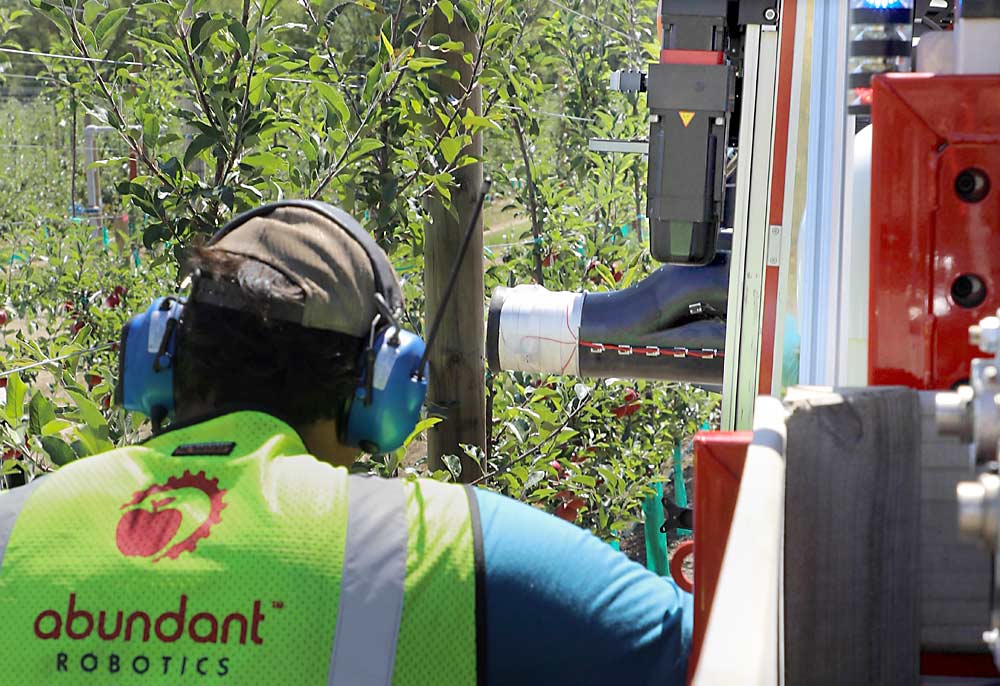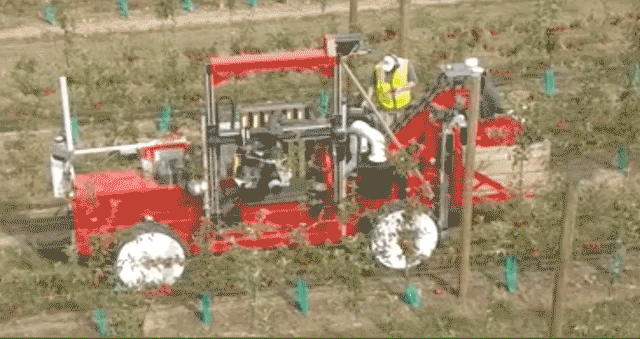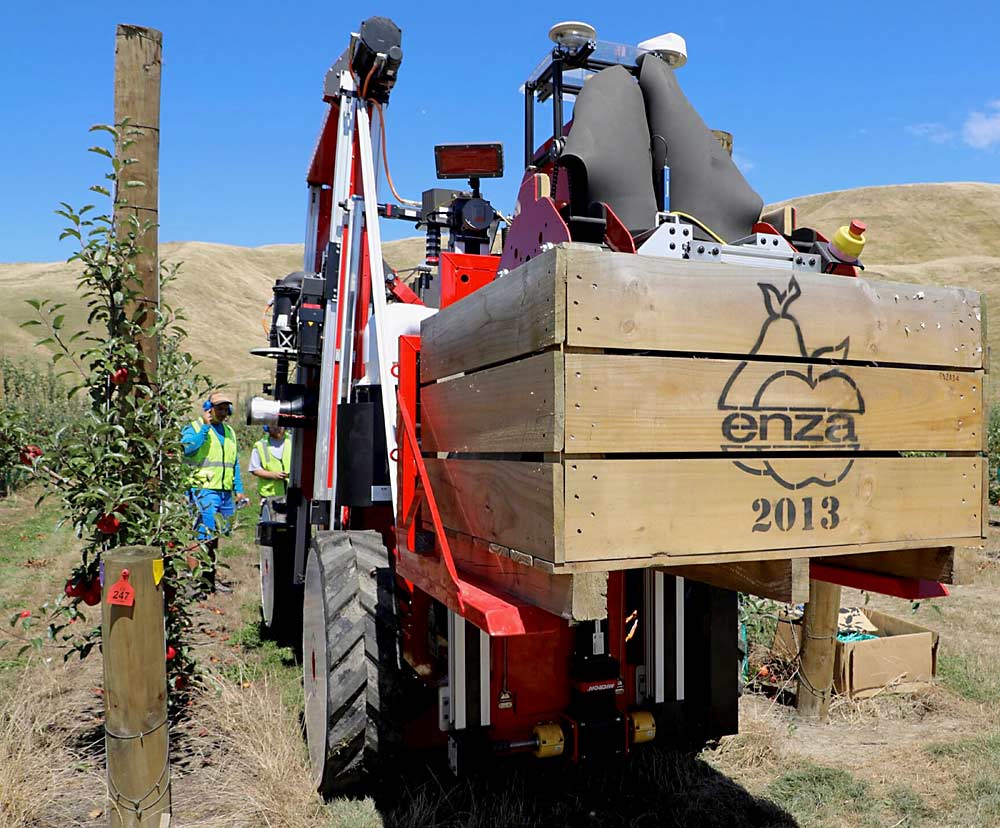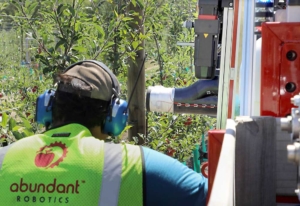Abundant Robotics, one of the companies working to develop a robotic apple picker, is harvesting the first commercial crop for New Zealand’s largest grower this spring.
T&G Global took an interest in Abundant’s technology a little over two years ago, and the commercial harvester fits with T&G’s orchard strategies, Abundant CEO Dan Steere told Good Fruit Grower in a telephone call.
“We’ve been doing development work in Washington every fall and then field work in New Zealand and Australia each spring, and we were ready to do commercial work for the first time this season,” he said. “T&G was the natural partner.”
Abundant owns the machines it has developed; the harvest is being handled as a contract service, as if T&G is hiring a crew of pickers.

Except the “crew” is a single machine with one arm that employs vacuum technology to pick the fruit and then moves the fruit through a series of automated steps to a bin.
The harvester picks just one side of a row at a time, but is able to distinguish ripe fruit, as well as pick fruit at night.
T&G has eight orchard blocks in New Zealand’s Hawke’s Bay region, and the company has held trials with the machine on three of those orchards on a range of varieties, according to Peter Landon-Lane, T&G’s chief operating officer.
In mid-March, the robotic picker was harvesting Royal Gala and Jazz, and in a month it was to be picking the later-season variety Envy, he said.

Landon-Lane likened deploying a robotic harvester to commissioning a new piece of equipment in a packing house.
“We are picking fruit with it, and the fruit is going straight into the supply chain,” he said. “It’s never intended to fully replace labor, at least not at its current level of technology. But this is the future, and it is an important part of our orchard management and will be increasingly so as we get more units here.”
More than half the cost of a piece of fruit is in labor, and it’s getting harder and harder to find workers, Landon-Lane said.
Robotics are one way to “future-proof” the industry, while still ensuring humans remain an important part of the labor force, though in more technical roles.
“This is making sure our production is able to grow — and there is still increasing demand for top-quality apples,” he said. “Robotics is a way to overcome the existing constraint and to make sure that doesn’t become an absolute constraint, that orcharding suddenly isn’t viable because we can’t find labor.”
T&G’s parent company, BayWA, invested in Abundant several years ago, separately from T&G’s interest in the technology, Landon-Lane said. Both he and Steere declined to reveal specifics about the harvest agreement.

Abundant intends to have multiple machines picking commercially in Washington for the apple harvest this fall. The company is perhaps six months behind where Steere had hoped it would be, but the company chose to be methodical in working its way through developing the machine’s capabilities into a system that’s ready for commercial work, he said.
There are different options for how to configure a machine like this, and Abundant came back to designing a simpler, single-arm machine that is more flexible and lower-cost to produce, he said.
“We think that gives us the right balance of cost and capability for growers who want it for real commercial work,” Steere said.
The company’s goal for 2020 is to transition from operating on a small-scale commercially to operating on a larger scale. •
—by Shannon Dininny







Leave A Comment